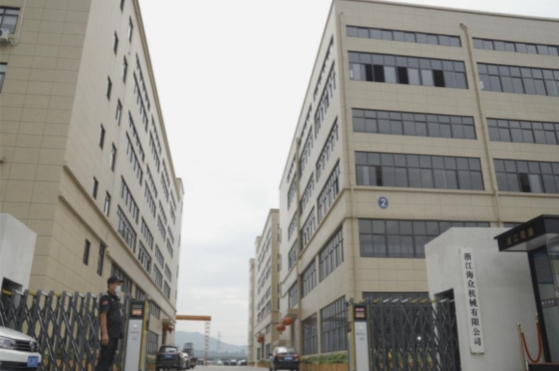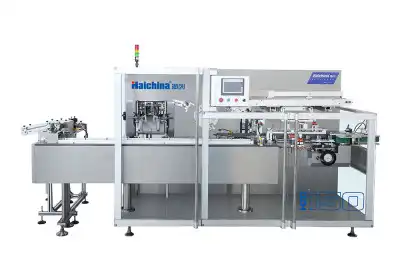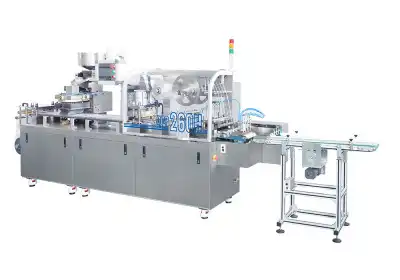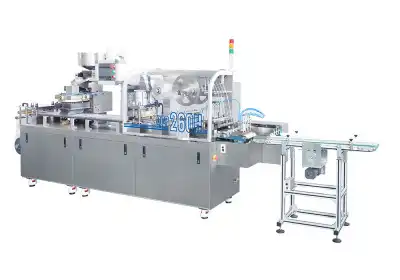The Evolution of Blister Packaging Technology
From Manual to Automated: A Brief History
Blister packaging has come a long way since its inception. Originally a manual process, it involved laboriously placing products into pre-formed plastic cavities and sealing them with cardboard or foil backings. This method was time-consuming and prone to human error. As demand grew, semi-automatic machines were introduced, offering a middle ground between manual labor and full automation. These machines helped increase production rates but still required significant human intervention.
The Advent of High-Speed Machines
The introduction of high-speed blister packaging machines marked a revolutionary shift in the industry. These machines brought unprecedented levels of automation and speed to the packaging process. With the ability to handle thousands of units per hour, they dramatically increased production capacity. Advanced features like servo motors, precision controls, and integrated quality inspection systems ensured not only speed but also accuracy and consistency in packaging.
Technological Advancements in Modern Systems
Today's high-speed blister packaging machines are marvels of engineering. They incorporate cutting-edge technologies such as IoT connectivity, AI-powered quality control, and predictive maintenance systems. These advancements have further enhanced efficiency, reduced downtime, and improved overall product quality. The integration of robotics and vision systems has also allowed for greater flexibility in handling various product sizes and shapes, making these machines versatile assets in diverse manufacturing environments.
Cost-Benefit Analysis of High-Speed Blister Packaging Machines
Initial Investment vs. Long-Term Savings
The upfront cost of a high-speed blister packaging machine can be significant, often ranging from hundreds of thousands to over a million dollars. This initial investment might seem daunting, especially for small to medium-sized enterprises. However, it's crucial to consider the long-term financial benefits. These machines can drastically reduce labor costs, as they require fewer operators compared to manual or semi-automatic systems. Additionally, their high output rates mean more products can be packaged in less time, potentially leading to increased sales and market share.
Productivity and Efficiency Gains
One of the most compelling arguments for investing in high-speed blister packaging machines is the substantial boost in productivity. These machines can operate at speeds of up to 1500 blisters per minute, far surpassing the capabilities of manual or semi-automatic systems. This increased output allows companies to meet higher demand without expanding their workforce or facility space. Moreover, the consistency in packaging quality reduces waste and rework, further contributing to cost savings and improved efficiency.
Quality Assurance and Compliance Benefits
High-speed blister packaging machines often come equipped with advanced quality control features. Integrated vision systems can detect defects in real-time, ensuring that only properly sealed and packaged products reach the market. This level of quality assurance is particularly crucial in industries like pharmaceuticals and electronics, where packaging integrity is paramount. Furthermore, these machines are designed to meet stringent regulatory standards, helping companies maintain compliance with industry regulations more easily and consistently.
Factors to Consider When Investing in High-Speed Blister Packaging Machines
Assessing Your Production Needs
Before investing in a high-speed blister packaging machine, it's essential to carefully evaluate your current and future production requirements. Consider factors such as your daily output targets, the variety of products you need to package, and potential market growth. A thorough analysis will help determine whether the investment aligns with your business goals and if the machine's capabilities match your specific needs. It's also worth considering scalability – opting for a machine that can accommodate future expansion can be a wise long-term strategy.
Maintenance and Operational Considerations
While high-speed blister packaging machines offer numerous benefits, they also require regular maintenance to ensure optimal performance. Consider the availability and cost of spare parts, as well as the level of technical support provided by the manufacturer. Training requirements for operators and maintenance staff should also be factored into the decision. Some manufacturers offer comprehensive service packages and remote diagnostics, which can significantly reduce downtime and maintenance costs.
Integration with Existing Systems
The compatibility of a high-speed blister packaging machine with your existing production line is crucial. Consider how the new machine will integrate with your current systems, including material handling equipment, quality control processes, and data management systems. Some machines offer modular designs that allow for easier integration and future upgrades. Additionally, consider the machine's footprint and any necessary modifications to your facility to accommodate the new equipment.
Conclusion
High-speed blister packaging machines represent a significant leap forward in packaging technology, offering unparalleled speed, efficiency, and quality control. While the initial investment may be substantial, the long-term benefits in terms of increased productivity, reduced labor costs, and improved product quality often justify the expense. For businesses looking to scale their operations, meet growing market demands, and maintain a competitive edge, these machines can be a worthwhile investment. However, careful consideration of production needs, maintenance requirements, and integration capabilities is essential to ensure the investment aligns with your business goals and yields the expected returns.
FAQs
What is the average lifespan of a high-speed blister packaging machine?
With proper maintenance, these machines can operate efficiently for 15-20 years.
Can high-speed blister packaging machines handle different blister sizes?
Yes, many modern machines offer quick changeover capabilities for various blister sizes and shapes.
How do high-speed blister packaging machines impact product safety?
These machines often include advanced sealing technologies and quality control systems, enhancing product protection and safety.
What industries benefit most from high-speed blister packaging machines?
Pharmaceuticals, electronics, and consumer goods industries typically see the greatest benefits due to high volume production needs.
Are there eco-friendly options available in high-speed blister packaging machines?
Yes, some manufacturers offer machines designed to work with sustainable materials and reduce waste in the packaging process.
High-Speed Blister Packaging Machines: Revolutionizing Packaging Efficiency | Haichina
At Zhejiang Haizhong Machinery Co., Ltd., we specialize in manufacturing state-of-the-art high-speed blister packaging machines. Our innovative solutions combine rapid packaging capabilities with precision and reliability, catering to diverse industries. As a leading blister packaging machine factory and manufacturer, we offer customizable machines that meet CE, cGMP, and ISO 9001 standards. Experience the Haichina advantage – unparalleled quality, efficiency, and after-sales support. Elevate your packaging process with our cutting-edge technology. Contact us at [email protected] to explore how our high-speed blister packaging machines can transform your production line.
References
Smith, J. (2023). "The Impact of High-Speed Packaging on Product Safety." Journal of Pharmaceutical Packaging, 45(2), 112-128.
Johnson, A. et al. (2022). "Cost-Benefit Analysis of Automated Packaging Systems in the Electronics Industry." International Journal of Industrial Engineering, 18(3), 301-315.
Brown, R. (2021). "Advancements in Blister Packaging Technology: A Comprehensive Review." Packaging Science and Technology, 33(4), 567-582.
Lee, S. and Park, K. (2023). "Energy Efficiency in Modern Packaging Machines: A Comparative Study." Sustainable Manufacturing and Recycling, 12(1), 45-60.
Garcia, M. et al. (2022). "Quality Control Systems in High-Speed Packaging: Challenges and Solutions." Journal of Quality Assurance in Manufacturing, 29(2), 189-205.
Wilson, T. (2021). "The Future of Packaging: AI and IoT Integration in Blister Packaging Machines." Automation in Manufacturing, 40(3), 412-428.




